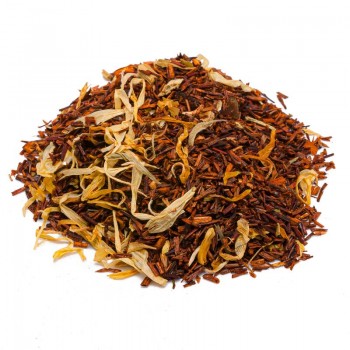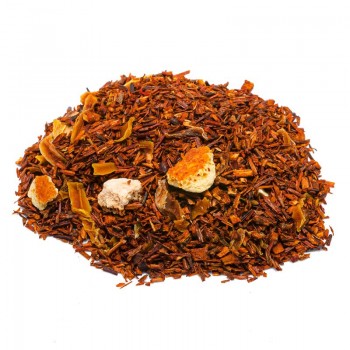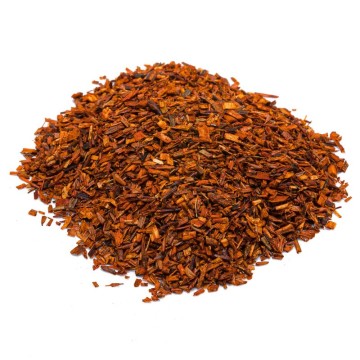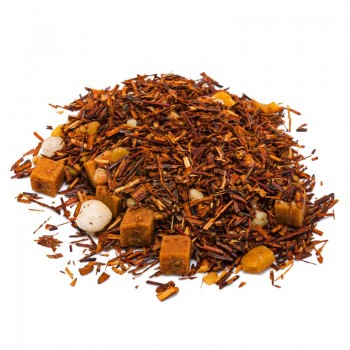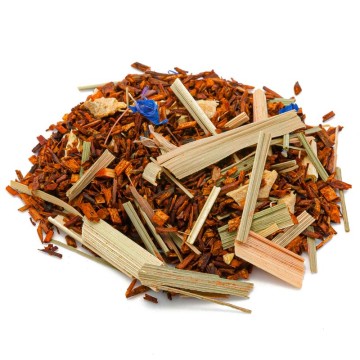This rooibos-based blend will certainly please you if you are one of those who put lemon in your tea, in fact the so-called African red tea is combined with ginger that has a flavor that vaguely resembles lemon and with lemongrass that reminds it even more, so much so that in English lemongrass is called lemongrass (literally lemon grass).
Characteristics of the ingredients of the ginger and lemon rooibos-based infusion
Rooibos is an Afrikaans word, the Germanic language of the colonizers of South Africa who were mostly of Dutch origin, which means red bush. Fun fact: the bush is not red at all, the elongated leaves are green, it is during the production process of rooibos that, during the fermentation phase that precedes drying, the leaves turn red. It is therefore a drying process. Rooibos is therefore used both to indicate the plant and the product obtained from it, the scientific name of the plant is Aspalathus linearis. Being part of the Fabeceae family and the Faboideae subfamily, A. linearis is related to beans, peas and soybeans.
The fact that rooibos is an Afrikaans word and that there is no word from the local pre-colonization peoples to indicate the tea-like infusion leads to the belief, in accordance with the lack of archaeological finds that suggest otherwise, that the use of the plant as a tea substitute was invented by the colonists, even if the locals certainly knew and used the plant before.
Citronella is actually not a single species of plant, all or at least many of the species of the genus Cymbopogon of the Poaceae family are known by the common name of citronella. The most interesting species are three: Cymbopogon winterianus (Java lemongrass), Cymbopogon nardus (Ceylon lemongrass) and Cymbopogon citratus which is lemongrass also known as lemongrass. The first two are the most appreciated for extracting the essential oil, used as a herbal remedy for its antimicrobial properties and above all as an insect repellent. Lemongrass is the one used in cooking (for example in Thai cuisine) because it has a more delicate flavor than the other two. The taste is defined as citrus and balsamic. Ginger is obtained from the rhizome (and we emphasize from the rhizome not from the root!) of a herbaceous plant of the Zingiberaceae family, Zingiber officinalis, the same family includes turmeric and cardamom. We said rhizome and not root, the rhizome is a part of the stem of some plants that has swollen and taken on the function of storing nutrients. The rhizome grows underground (that's why it's confused with the root) and this reserve is what allows some species of plants to perennialize, otherwise they would be annual plants that do not survive the winter, so all the essential oils and properties of the plant are concentrated there. Ginger also has a taste with hints of lemon but is more pungent, almost spicy.






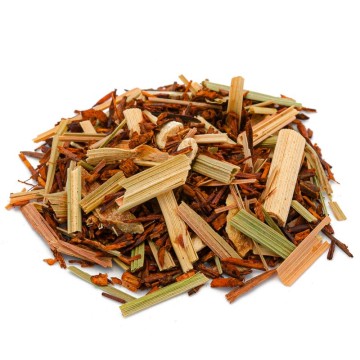




 No reward points for this product.
No reward points for this product.
![rooibos cioccolata calda [Natura d'Oriente]](https://www.naturadoriente.com/3513-home_default/rooibos-hot-chocolate.jpg)






